Extraction steps and flavor characteristics of Kenyan coffee beans by hand extraction introduction to the classification of Kenyan coffee varieties
Kenya and Ethiopia are the representative beans of African beans. Ethiopian flowers and fruits are particularly sour. Kenya's acidity is very thick and rich, and the acidity of both is lingering.
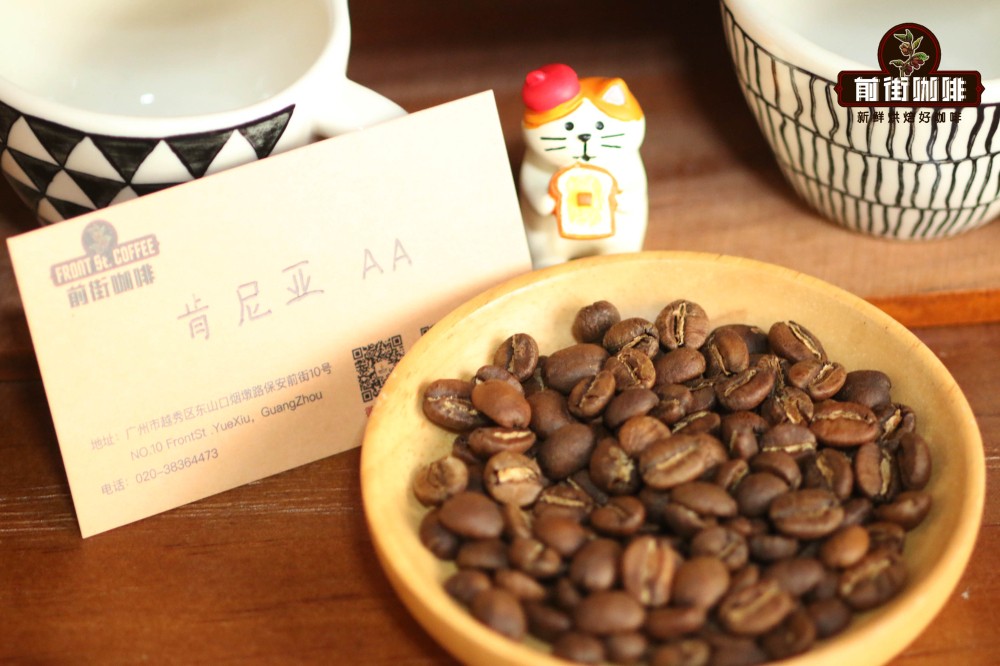
Some people will love the strong berry notes of Kenya, especially the taste of small tomatoes, others will say that the flavor of small tomatoes is the iconic flavor of Kenya, if there is no flavor of small tomatoes, it is not Kenyan coffee. Qianjie believes that it is not possible to define a coffee bean from Kenya, which is originally characterized by a thick and juicy taste. For all plants, the removal of soil to the environment will affect plant growth, and coffee trees are no exception. Changes in climate and soil in the producing areas will lead to changes in the flavor of coffee beans in each harvest season. Qianjie has tested a lot of coffee beans from Kenya through cups in recent months and found that coffee beans from any Kenyan producing area have a full sense of juice. of course, it is not the same feeling, but there will still be differences in acidity and flavor.
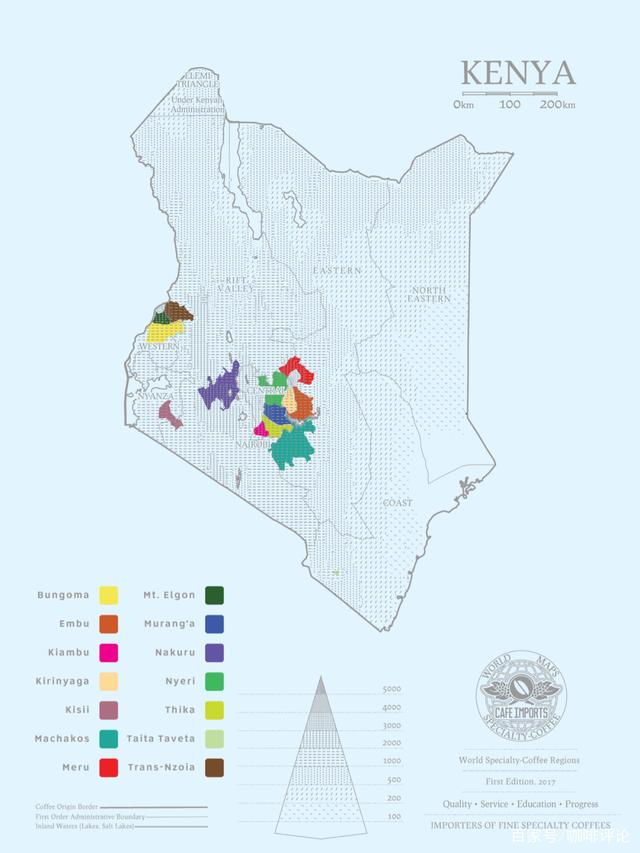
Kenya is located in eastern Africa, with the equator across the central part, Soma to the east, Tanzania to the south, Uganda to the west, Ethiopia and Sudan to the north, and the Indian Ocean to the southeast. There are many plateaus in the territory, with an average elevation of 1500 meters. Kenya has a diverse climate, the whole territory is located in the tropical monsoon area, the coastal area is hot and humid, the plateau climate is mild, and the mountains above 3500 meters sometimes snow. The highest temperature of the year is 26 ℃ and the lowest is 12 ℃. To the south of the equator, there is mainly tropical forest and savanna climate; the coastal area is tropical, with high temperature and rainy throughout the year; the more inland, the drier the climate is, with the northern desert and semi-desert accounting for about 56% of the country. Affected by the monsoon climate, Kenya does not have four seasons with prominent temperatures, only the difference between the rainy season and the dry season.
Main coffee producing areas in Kenya
Kenya coffee producing areas are mainly distributed in the central and western regions, including Thika, Kirinyaga, and the west side of Mount Kenya (Mt. Kenya West, Nyeri, Kiambu, Muranga. The harvest periods of the six major producing areas are all from October to December (the main production season) and from June to August (the by-product season).

Among them, Sika and Kirin Yajia can best reflect the flavor of the African region.
Sika (Thika)
Sika is a small town in Nairobi, the capital of Kenya. There are many coffee fields around Nairobi, and Sika is an industrial town, but surrounded by agriculture and waterfalls. There are about 2000 farmers in Sika. The planting history of Kenyan Sika coffee can be traced back to the end of the 19th century. Coffee trees were introduced from neighboring Ethiopia in the north and improved by their own varieties. At present, the common varieties are Bourbon, Kents, SL34, SL28, Typica and Riuri 11. Now about 90% of the coffee varieties are SL34 and SL28. The new variety Batian published in 2007 has not been planted in large quantities. The flavor of the region has bright acidity, thick berry juice and honey sweetness. Altitude: 1550m-1750m, variety: sl-28,sl-34.
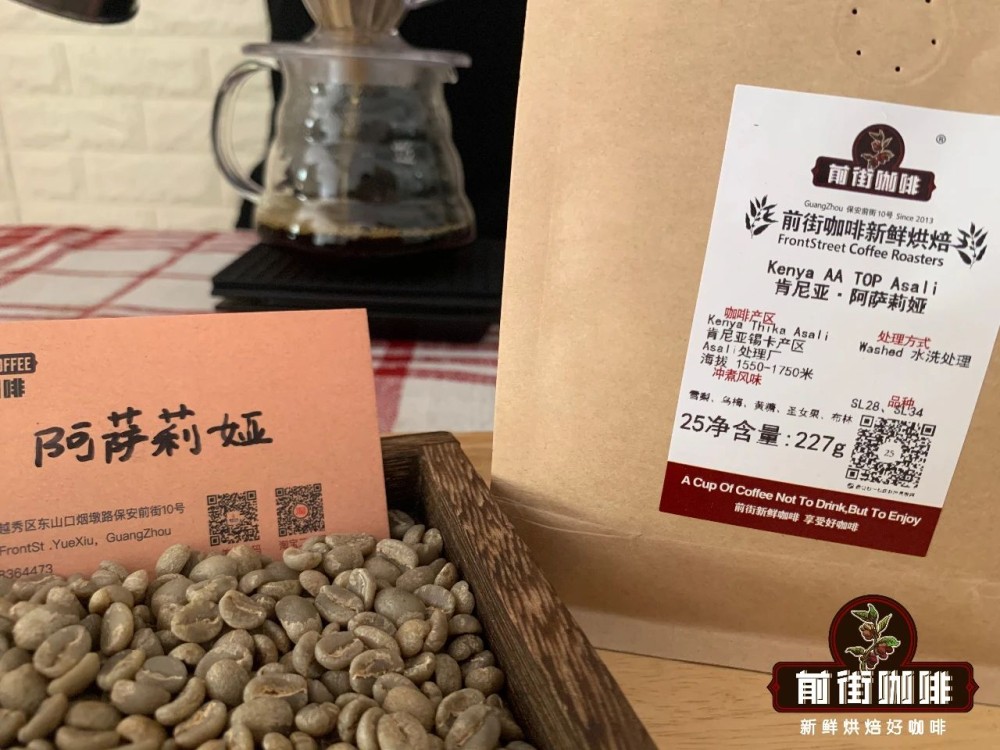
The Asalia coffee on the front street is from the asali processing plant in the Sika region of Kenya. Sika is a growing area in central Kenya, which has the highest altitude coffee growing area in the region, and Sika is a secondary area of this growing area, located at the foot of Aberdare Ridge, with red volcanic soil and rich in organic matter.
Kenyan coffee bean varieties
The high-altitude highlands near Mount Kenya provide the best growing environment for coffee, including the Aberdare Mountains, Nyanza, Kisii, Bungoma, Kericho and Nakuru, where Arabica varieties were first introduced from Ethiopia.
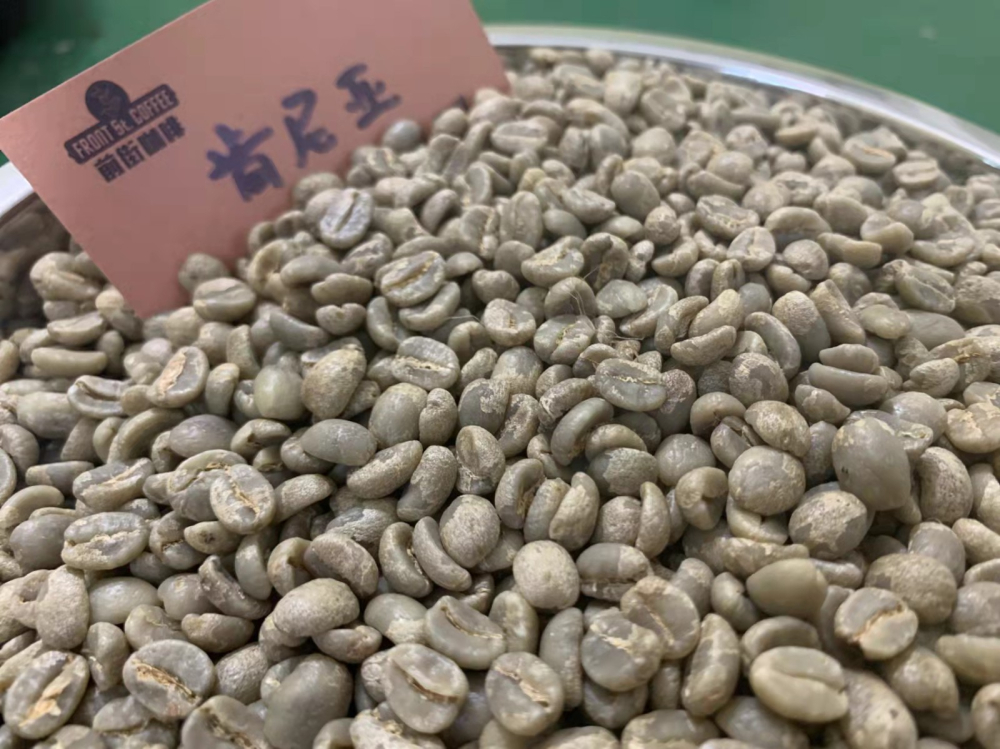
As early as the 1930s, SL28 and SL34 were selected and planted nationally in Kenya through Scott laboratory screening. Because these two varieties have excellent berry acidity and were later transferred by some Central American estates, the Costa Rican COE champion beans were SL28 and Rosa the year before last. Since then, Kenya has spared no effort to develop varieties that are resistant to leaf rust.
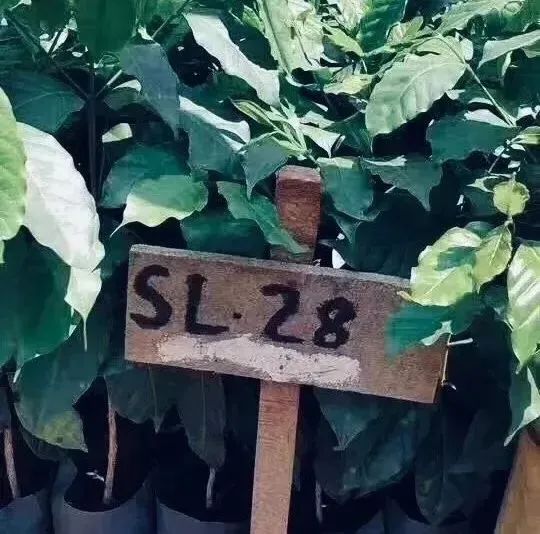
SL28 and SL34 are genetic variants. They account for the vast majority of Kenya's high-quality coffee production, but these varieties are susceptible to leaf rust. SL34 has French missionaries, bourbon, and more Tibica ancestry. Copper leaf color and broad bean-shaped beans have a great sense of sweetness, balance and complex flavor, as well as remarkable citrus and black plum characteristics.
Kenyan coffee bean treatment
Kenyan water washing is a cyclic repeated treatment after fermentation. On the day of harvest, the best quality coffee cherries are selected, peeled and fermented. The fermentation time is 24 hours, and then washed with clean river water after 24 hours. Then, it is fermented again with clean river water for 24 hours, and then washed, so it is repeated 3 times for 72 hours, so it is called Kenyan 72-hour fermentation water washing treatment, referred to as K72. This treatment allows coffee beans to ferment for a long time at low temperature, so that beans can have a brighter, cleaner but full flavor!
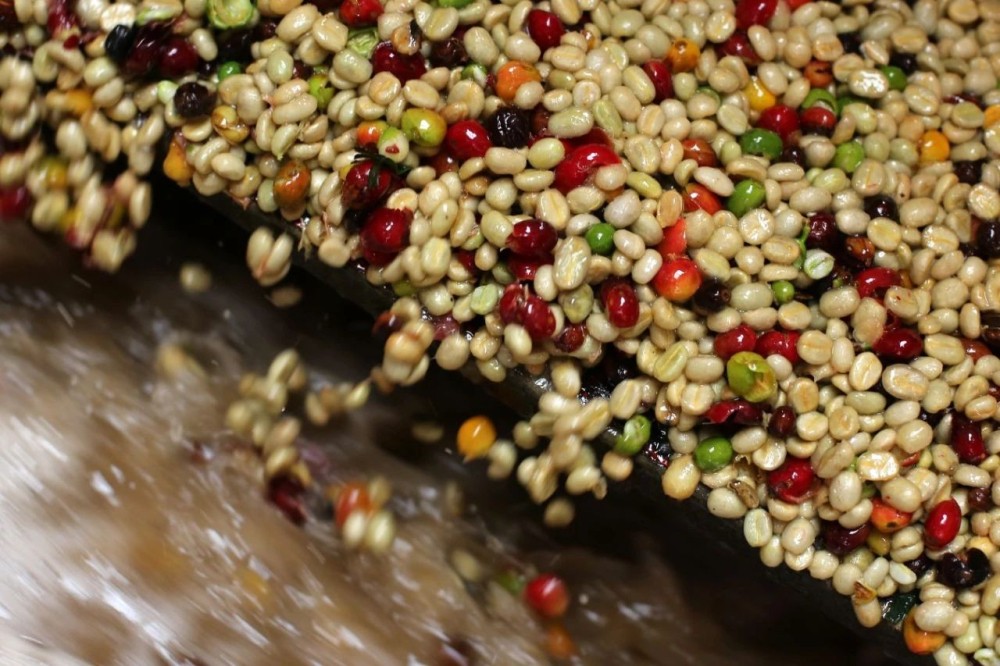
How can I brew the rich juice feeling of Kenyan coffee?
If you want to brew a good cup of coffee, Qianjie must first know the basic information of this coffee bean, such as where the coffee bean comes from, what flavor it has, what variety it is, and so on. Qianjie first bakes according to this information, and then carries on the cup test and brewing.
Qianjie Coffee thinks that in order to make a good pot of coffee, it mainly starts from these four aspects: water temperature, grinding thickness, powder-to-water ratio, brewing method. 1. Water temperature
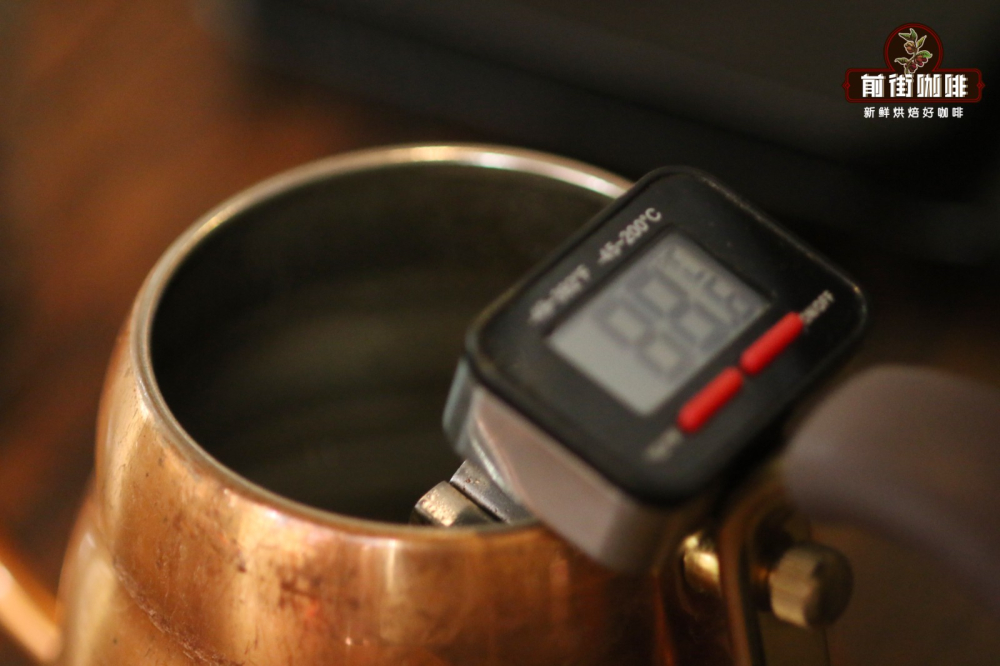
When making coffee by hand, Qianjie coffee will choose different water temperature according to the degree of roasting. When roasting, the substances in the coffee beans are lost with the deepening of the roasting degree, so the deep-roasted coffee beans will lower the temperature in order to avoid extracting too much odor. It is recommended to choose a water temperature of 90-91 ℃ for medium and light baked beans and 88 ℃ for medium and deep roasting.
2. The degree of grinding of coffee is also related to the degree of roasting. The degree of grinding refers to the size of coffee particles, because the degree of grinding will affect the contact time between coffee and water. If the coffee powder is finer, the water can extract more substances in the same time, but the degree of grinding is fine, the coffee is easy to be extracted in the process of extraction; on the contrary, the coarser the degree of grinding of coffee, the less substances extracted by water in the same time, but the coarser the degree of grinding is, the coffee is prone to insufficient extraction. In addition, because the grinder in everyone's hand is different, the parameters are also different. Here, Qianjie suggests that we buy a No. 20 cup test and correction screen, screen aperture 0.85mm, we take 10g coffee beans, adjust a general grinding degree to grind coffee powder, and then pour it into the sieve to weigh the coffee powder (be sure to sift until no coffee powder can be sifted out to complete the screening).
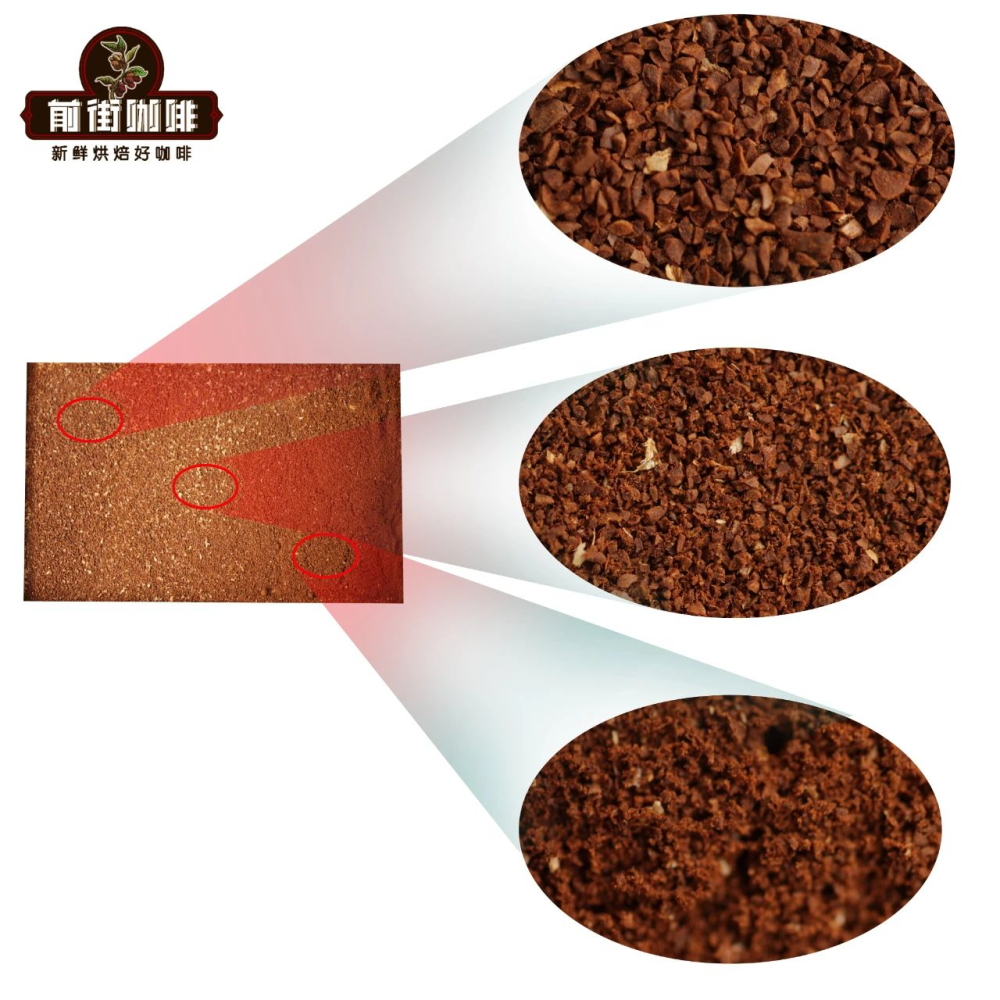
The screening pass rate is 70% 75% (10g sieve 7-7.5g) is the most suitable degree of grinding. The grinding degree of hand-baking is 80% for shallow baking and 75% for medium-deep baking. If it exceeds the suitable screening rate, it is appropriate to adjust the coarse grinding degree, and if it does not reach the appropriate screening rate, it is necessary to reduce the grinding degree properly. 3. Powder-water ratio
This is Qianjie Coffee according to the scaa gold cup extraction theory of hand-made coffee gouache extraction parameters of the difference in taste Qianjie produces a cup of coffee, will use 15g coffee powder, the choice of powder is usually based on the size of the filter cup design as a reference, and the Qianjie filter cup is suitable for 1-2 people to drink, can be between 15-20g powder, too much powder is difficult to control, the extracted coffee flavor is easy to mix.
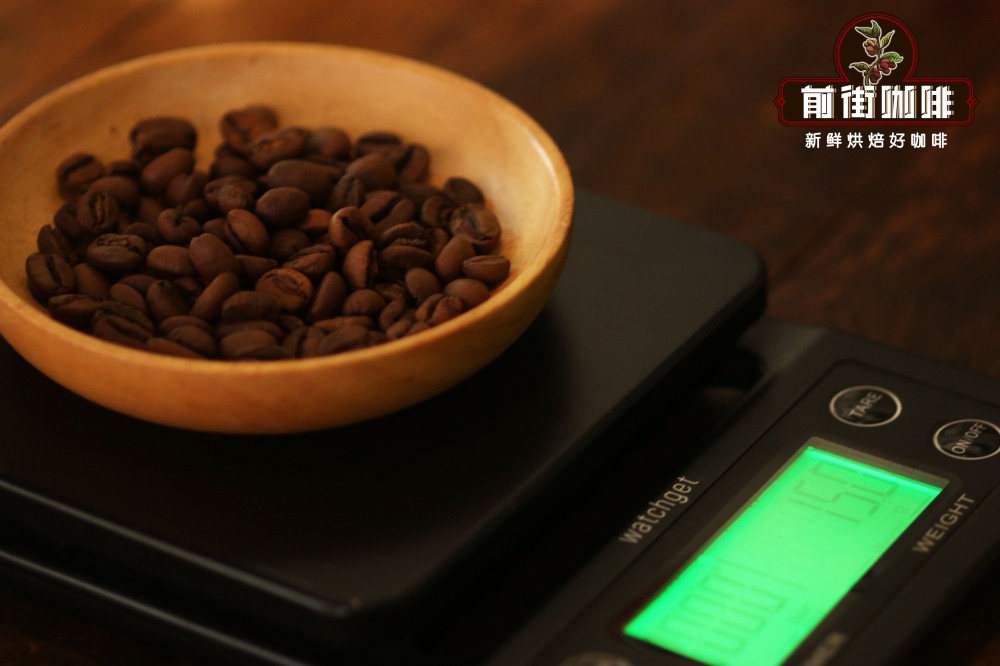
As for the powder-to-water ratio, 1:15 is the most commonly used, within the range of 1-14-14-1-16, 1:14 is available for those who like a strong taste, and 1:16 can be chosen for a clearer flavor. Qianjie thinks that everyone has different tastes, so it takes the median value of 1:15. Therefore, Qianjie Coffee suggests that you might as well use the 1:15 powder-to-water ratio that is not easy to make when brewing coffee. 4. Washing and cooking technique
Finally, the hand punching technique is also very important, which can be seen frequently, such as three-stage style, one-step flow, drip-by-drop style and so on. Here in Qianjie Coffee, beginners are advised to use three-stage water injection to brew, because this method is suitable for light-roasted, medium-shallow and medium-deep roasted coffee beans. The segmented extraction method of three-stage water injection can clarify the flavor of the front, middle and back of the coffee, and can ensure the flavor of the coffee. Next, Qianjie Coffee will teach you how to pour water into the three stages of hand-brewed coffee.
Qianjie three-stage brewing Kenyan coffee parameters and techniques: (Qianjie Coffee roasted this Kenyan coffee bean, taking into account its rich fruit acidity and full berry juice taste, so the use of medium-light roasting. )
Use v60 filter cup to have richer coffee flavor, water temperature 91 ℃, water powder ratio 1:15, powder content 15g, grinding degree (China 20 standard sieve pass rate 80%).
First water injection: steaming (to help exhaust)
Now wet the v60 filter cup to make the filter paper fit better with the coffee filter cup. Put 15g coffee powder into the water in the sharing pot at the same time and steam with 30g water for 30s. Many coffee lovers don't know why hand-brewed coffee is steamed. In fact, steaming is because coffee beans in the roasting process from raw beans to cooked beans will undergo a series of chemical reactions and physical changes, after a certain degree of baking, coffee beans will accumulate a large amount of gas (most of which is carbon dioxide).
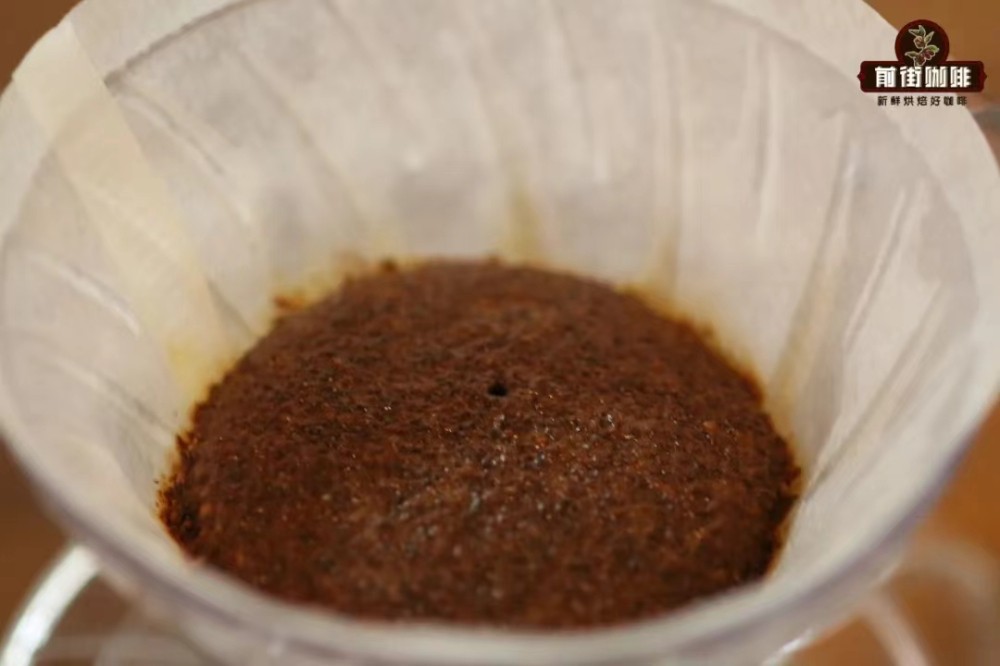
Generally speaking, the fresher it is, the closer it is to baking, and the more bubbles usually appear during steaming. Deep-baked beans also release more gas during steaming than shallow baked beans. The coffee beans of Qianjie coffee are freshly roasted, so guests are generally advised to grow beans for three days and let the beans release carbon dioxide first, so that the problem of instability and insufficient extraction can be avoided. After steaming and discharging the gas, the coffee particles can absorb water evenly, which can make the extraction uniform in the later stage. Good steaming can not only make the coffee powder exhaust quickly, fully and evenly, but also make the coffee powder come into contact with the water quickly, helping the coffee powder to be extracted evenly. These are precisely the purpose and significance of steaming hand-made coffee. Second water injection
After steaming for 30 seconds, the second water injection was carried out, and the small water injection around the center was started until 125g stopped. In order for the penetrating force of the water column to be concentrated, the range of movement around the water column should be small, about the size of an one-dollar coin, and then go out. At the beginning of the second water supply, we should pay attention to the amount of water, and try not to exceed the height of the powder layer, that is, when the water column is wound close to the filter paper, the water supply can be stopped.
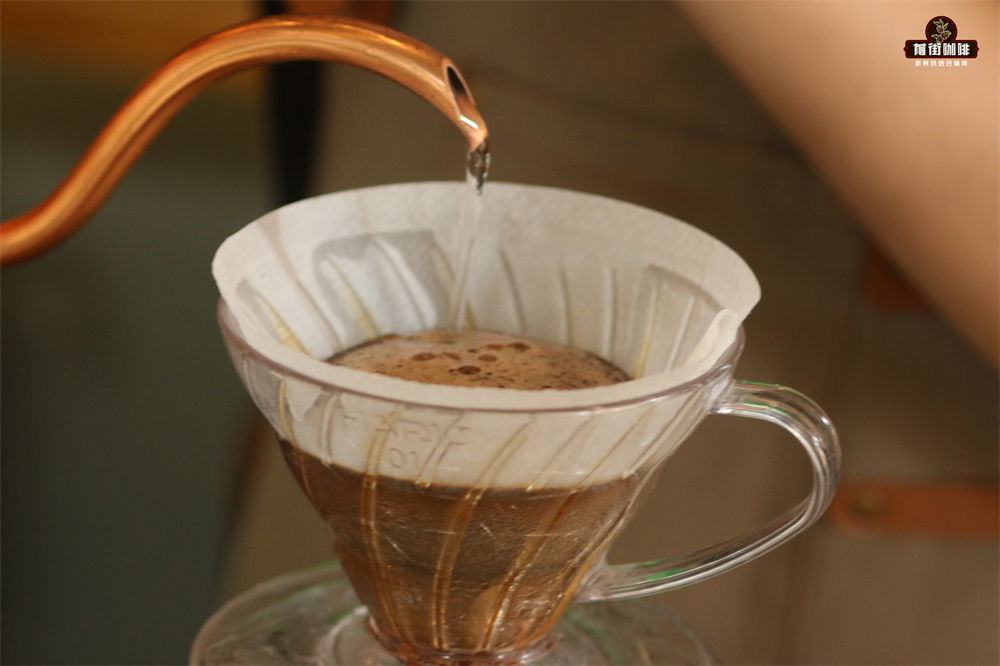
The third water injection
When the coffee powder layer drops to half the position of the filter cup, the same method is injected into the second stage until 225g, and the filter cup can be removed after all the dripping is completed.
From the third water supply, it is necessary to observe the extent of the decline of the water level, also from the center of the water supply circle, the amount of water should not exceed the height of the powder layer, then it will also be observed that the proportion of foam has already occupied the surface, and the third water injection will increase the tumbling of coffee granules, let all the deposited particles tumble, and then dissolve the soluble matter.
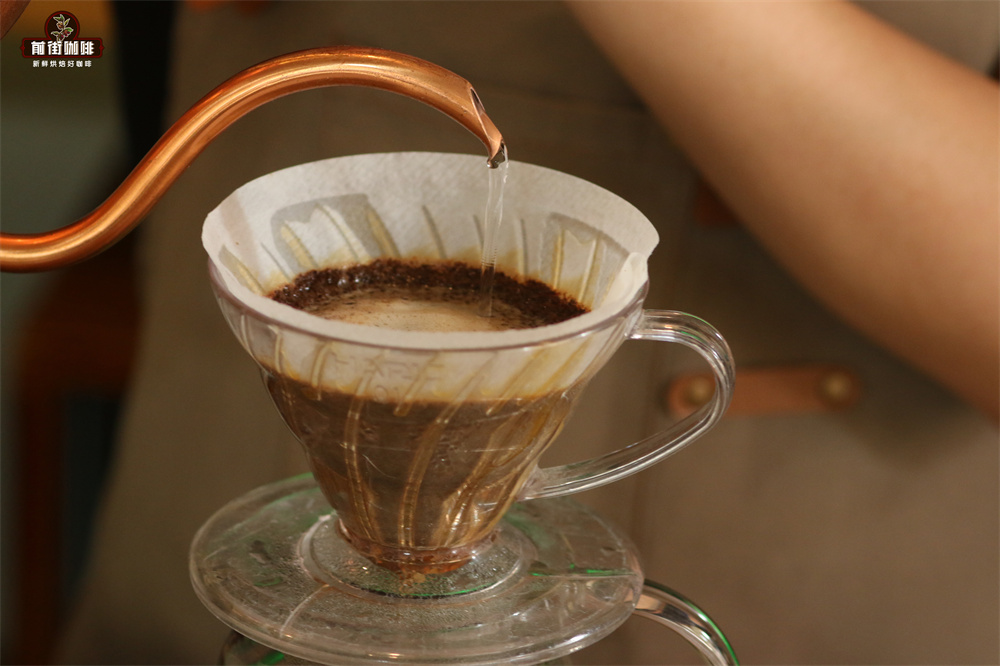
The rolling particles will start to rest because they stop adding water, and at this time they have to rely on the velocity caused by the falling water level to make the coffee particles produce friction, so once the addition of water stops, the coffee powder particles will sink, causing blockage, so pay special attention to the rhythm of adding water. If the water is cut off too many times, it is tantamount to letting the coffee powder particles soak in the water all the time, which will lead to the astringent and miscellaneous taste of the coffee extract at the end.
From the beginning of water injection, the extraction time is 2: 39. Next, pick up the whole cup of coffee and shake it well, then pour it into the cup and taste it.

Kenya Assali Ya coffee flavor features: wet fragrance with ripe tomatoes and flowers, when the temperature is high, the entrance is caramel, yellow sugar sweet, the temperature drops slightly, virgin fruit, Umei acid notes emerge, bright acidity, clean taste, outstanding sweetness in the middle, with a sense of juice.
Suggestions for making coffee in front of the street:
To brew a good cup of coffee, you still need to pay attention to the freshness of the beans. Qianjie has always believed that the freshness of coffee beans has a great relationship with the flavor of coffee, so the coffee beans shipped in Qianjie coffee are roasted within 5 days. The purpose of Qianjie roasting is "freshly roasted coffee", so that every guest who places an order is the freshest coffee when he receives it. The bean cultivation period of coffee is about 4-7 days, so when the guest gets it, it is the time when the flavor is the best.
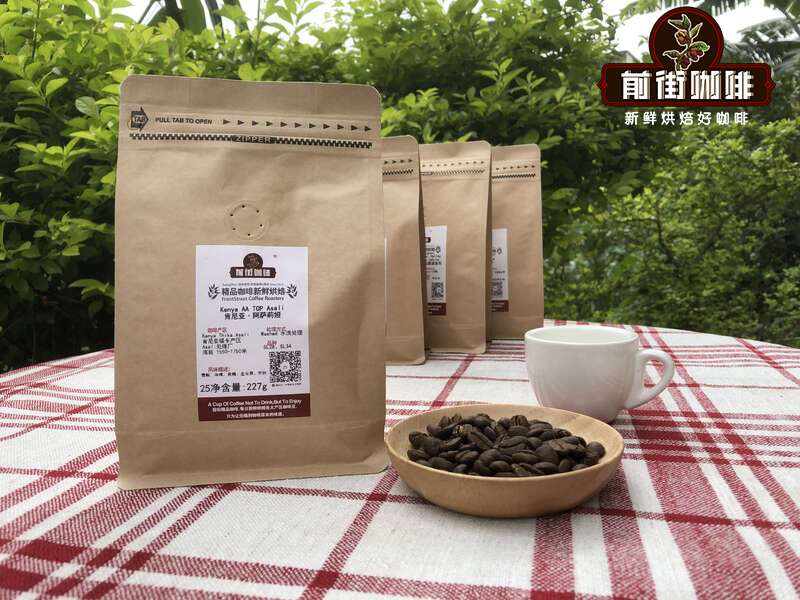
For those who need to be ground, Qianjie warmly reminds you that if the coffee beans are ground in advance, there is no need to raise the beans, because in the process of transportation, the pressure caused by carbon dioxide in the package can also make the coffee flavor round. so you can drink a cup of coffee as soon as you receive the coffee powder. But the coffee powder needs to be brewed in time, because the coffee powder oxidizes more quickly after contact with the air, that is to say, the flavor of the coffee will dissipate more quickly, and the flavor of the coffee is not so good. Therefore, Qianjie suggests buying whole beans, grinding and flushing now, so that we can better taste the flavor of coffee.
Professional coffee knowledge exchange more coffee bean information please follow the coffee workshop (Wechat official account cafe_style)
For more boutique coffee beans, please add private Qianjie coffee on Wechat. WeChat account: qjcoffeex
Important Notice :
前街咖啡 FrontStreet Coffee has moved to new addredd:
FrontStreet Coffee Address: 315,Donghua East Road,GuangZhou
Tel:020 38364473
- Prev
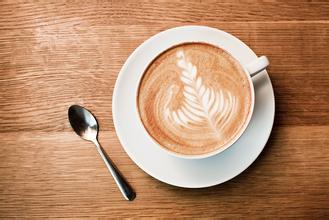
Taste description of Costa Rican Coffee Plantation Environment
The taste of Costa Rican coffee plantation environment describes the carefully selected coffee seeds were initially planted in flowerpots to be taken good care of, the seeds slowly germinated into seedlings. After a few weeks, the seedlings grow butterfly-like leaves. However, this is not a real coffee tree leaf. It takes two to three weeks for the real leaf to grow out of the protective leaf.
- Next

Description of taste and flavor of Salvadoran Pacamara coffee beans
The taste and flavor of El Salvador Pacamara coffee beans traditionally Salvadoran coffee farmers do not deal with the exposure of coffee fruits very carefully, and at the same time, the equipment is relatively simple, but Fernando keeps updating many of the equipment in the processing plant, so that Santa Elena Manor is one of the few in El Salvador to use African scaffolding for coffee fruit solarization.
Related
- Detailed explanation of Jadeite planting Land in Panamanian Jadeite Manor introduction to the grading system of Jadeite competitive bidding, Red bid, Green bid and Rose Summer
- Story of Coffee planting in Brenka region of Costa Rica Stonehenge Manor anaerobic heavy honey treatment of flavor mouth
- What's on the barrel of Blue Mountain Coffee beans?
- Can American coffee also pull flowers? How to use hot American style to pull out a good-looking pattern?
- Can you make a cold extract with coffee beans? What is the right proportion for cold-extracted coffee formula?
- Indonesian PWN Gold Mandrine Coffee Origin Features Flavor How to Chong? Mandolin coffee is American.
- A brief introduction to the flavor characteristics of Brazilian yellow bourbon coffee beans
- What is the effect of different water quality on the flavor of cold-extracted coffee? What kind of water is best for brewing coffee?
- Why do you think of Rose Summer whenever you mention Panamanian coffee?
- Introduction to the characteristics of authentic blue mountain coffee bean producing areas? What is the CIB Coffee Authority in Jamaica?

